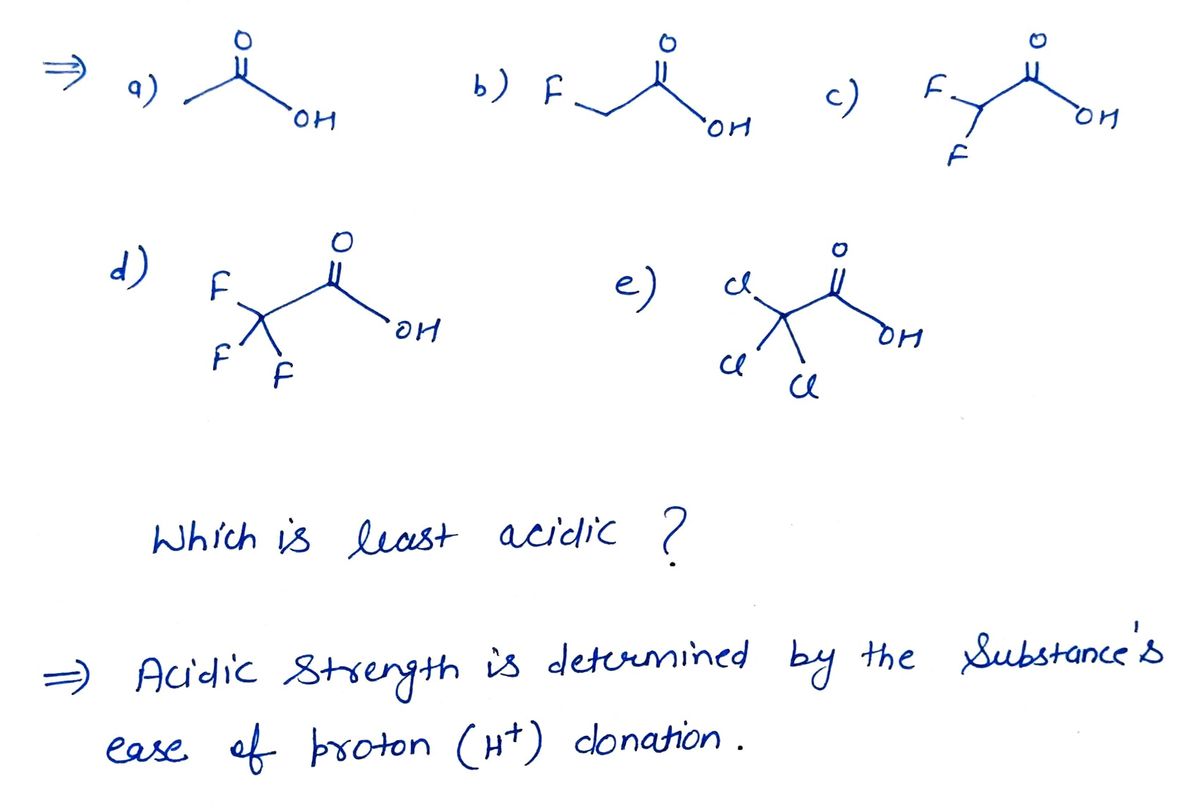Ionic Equilibrium
Chemical equilibrium and ionic equilibrium are two major concepts in chemistry. Ionic equilibrium deals with the equilibrium involved in an ionization process while chemical equilibrium deals with the equilibrium during a chemical change. Ionic equilibrium is established between the ions and unionized species in a system. Understanding the concept of ionic equilibrium is very important to answer the questions related to certain chemical reactions in chemistry.
Arrhenius Acid
Arrhenius acid act as a good electrolyte as it dissociates to its respective ions in the aqueous solutions. Keeping it similar to the general acid properties, Arrhenius acid also neutralizes bases and turns litmus paper into red.
Bronsted Lowry Base In Inorganic Chemistry
Bronsted-Lowry base in inorganic chemistry is any chemical substance that can accept a proton from the other chemical substance it is reacting with.

b) 
c) 
d) 
e) 
This question asks for the identification of the compound that is least acidic among the given structures. Each structure is a carboxylic acid with various substituents that affect its acidity.
### Explanation:
- **Structure a** is acetic acid, a simple carboxylic acid without electronegative substituents.
- **Structure b** has a fluorine atom attached to the carbon adjacent to the carboxyl group, increasing its acidity compared to acetic acid due to electron-withdrawing effects.
- **Structure c** includes a fluorine atom on each of the two carbon atoms, further increasing acidity.
- **Structure d** has two fluorine atoms attached to the carbon adjacent to the carboxyl group, making it more acidic.
- **Structure e** has chlorine atoms on the adjacent carbon, which also increases acidity but to a lesser extent compared to fluorine.
The task is to compare these effects and determine the least acidic compound based on the presence and influence of electron-withdrawing groups.](/v2/_next/image?url=https%3A%2F%2Fcontent.bartleby.com%2Fqna-images%2Fquestion%2F20b515c9-5e3a-448e-90a2-ac3b562e1523%2Ff2da21b1-fb3e-4110-9b4d-3b7edbfb7646%2F4a9zl4_processed.jpeg&w=3840&q=75)

Step by step
Solved in 3 steps with 3 images









